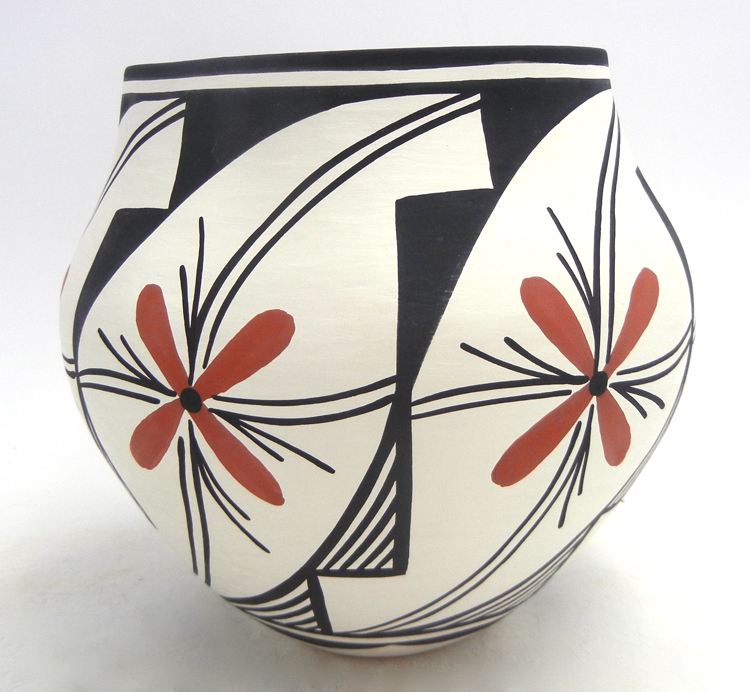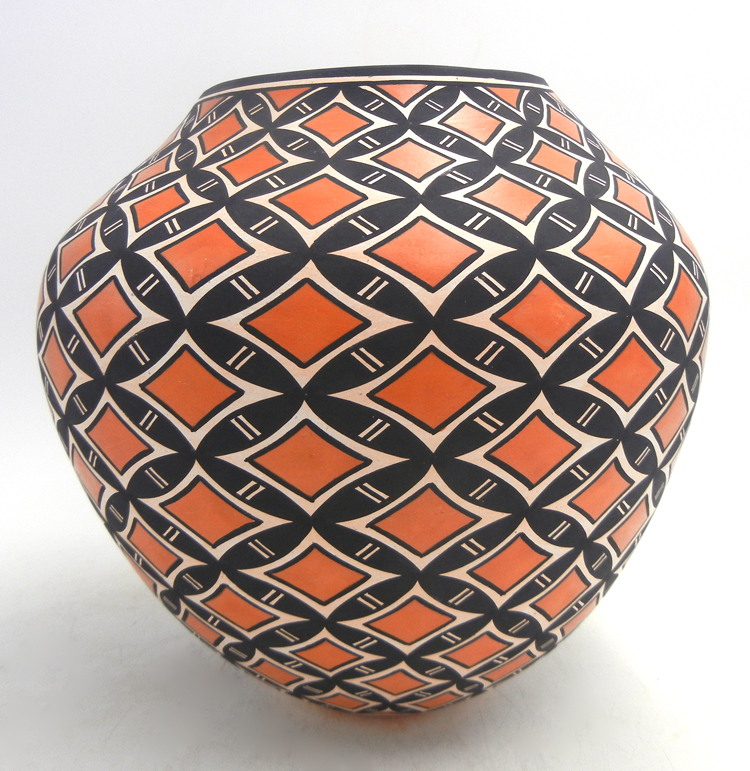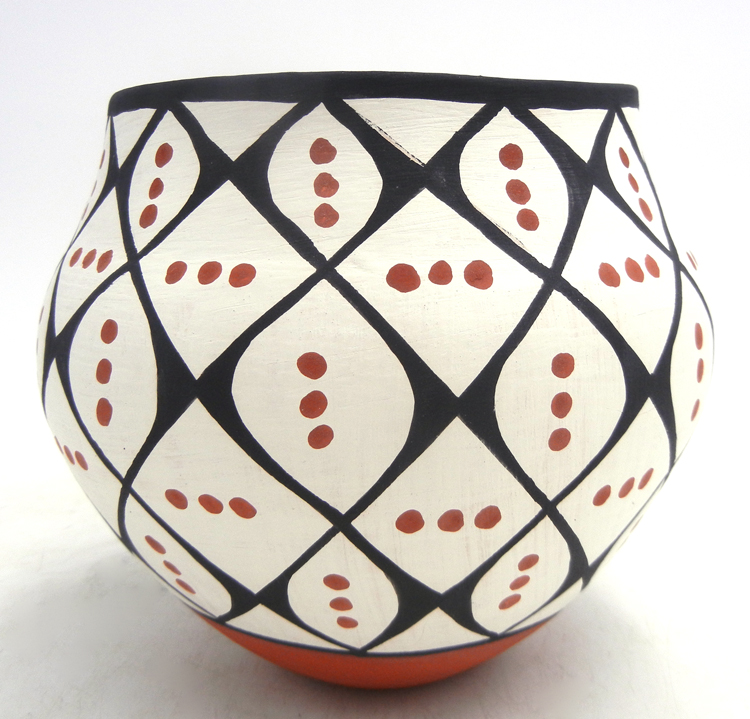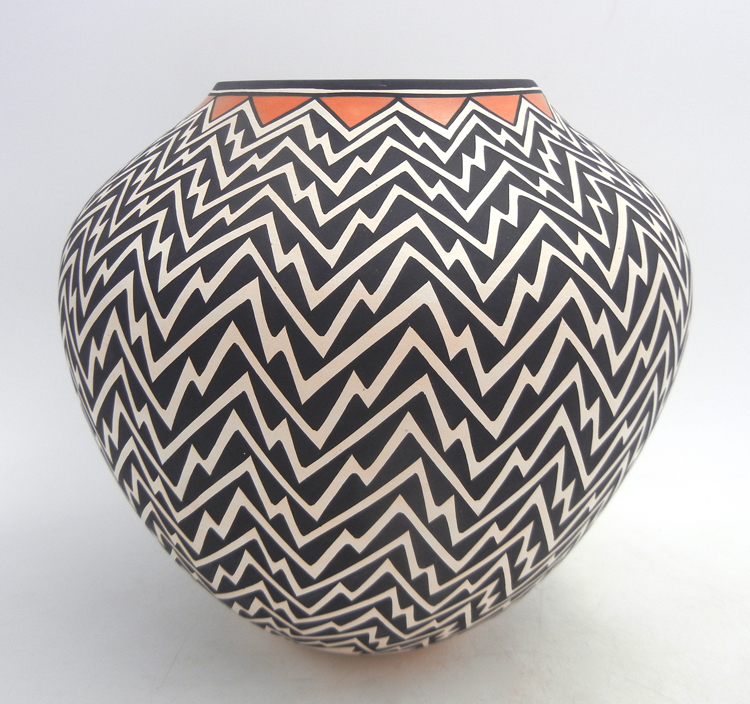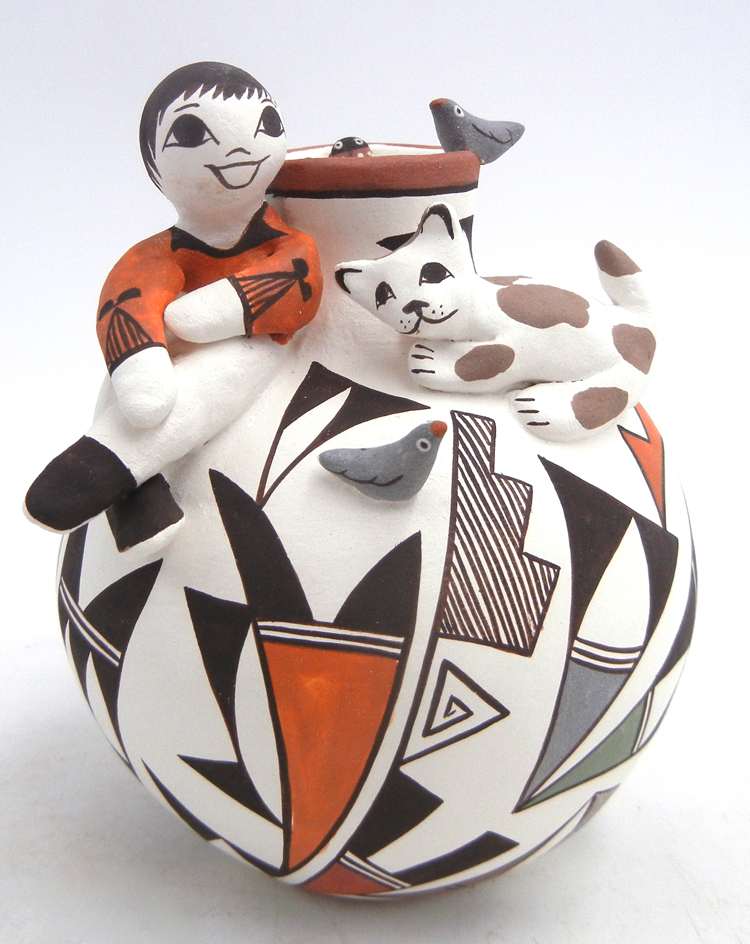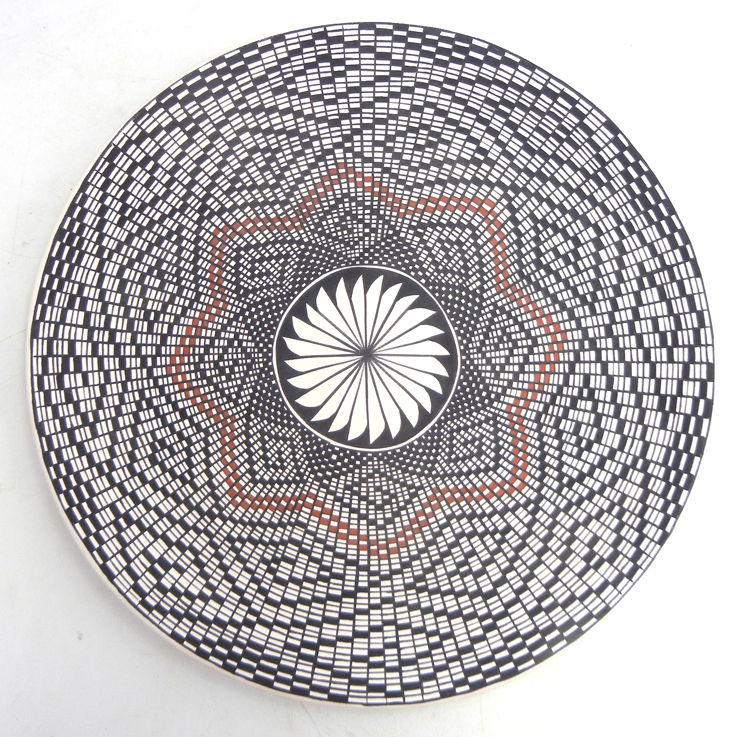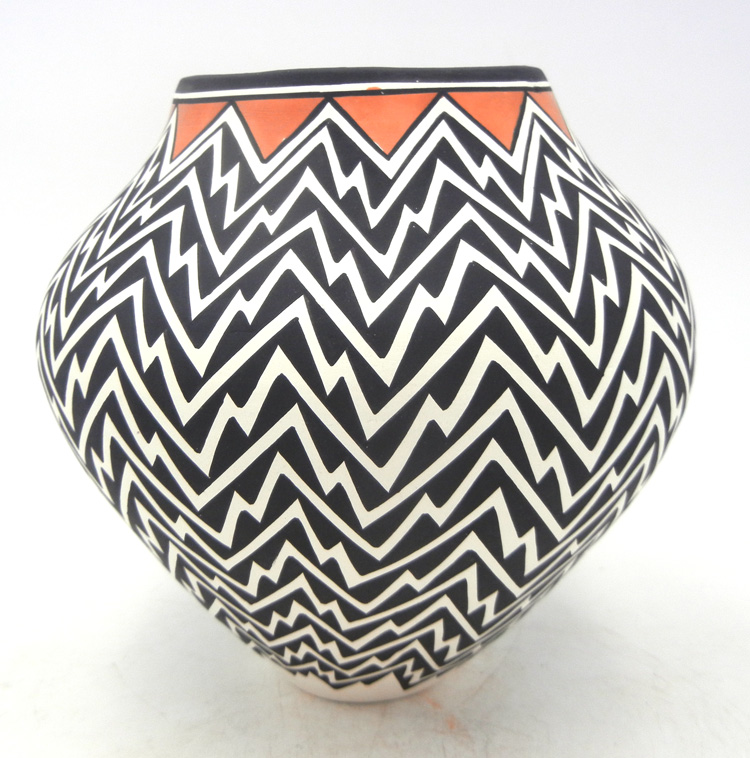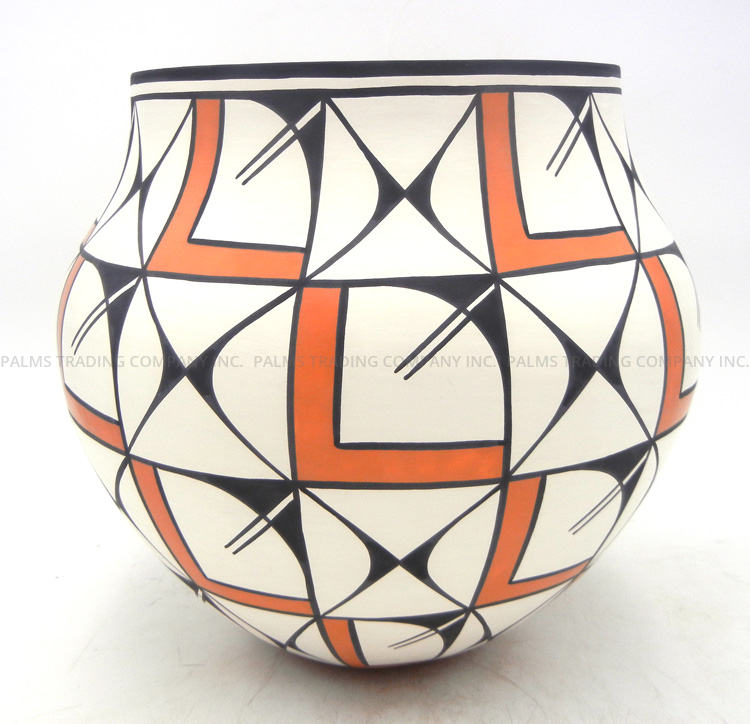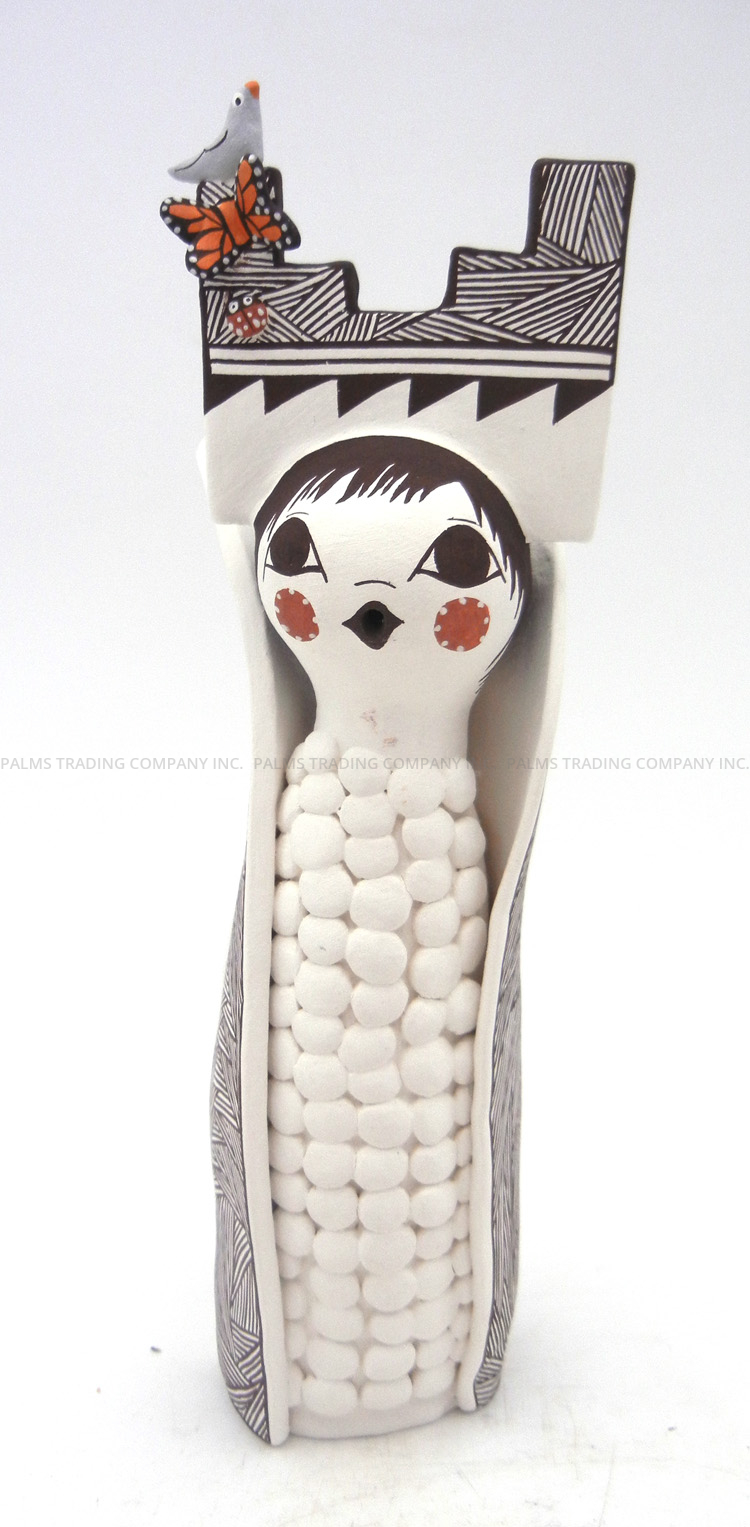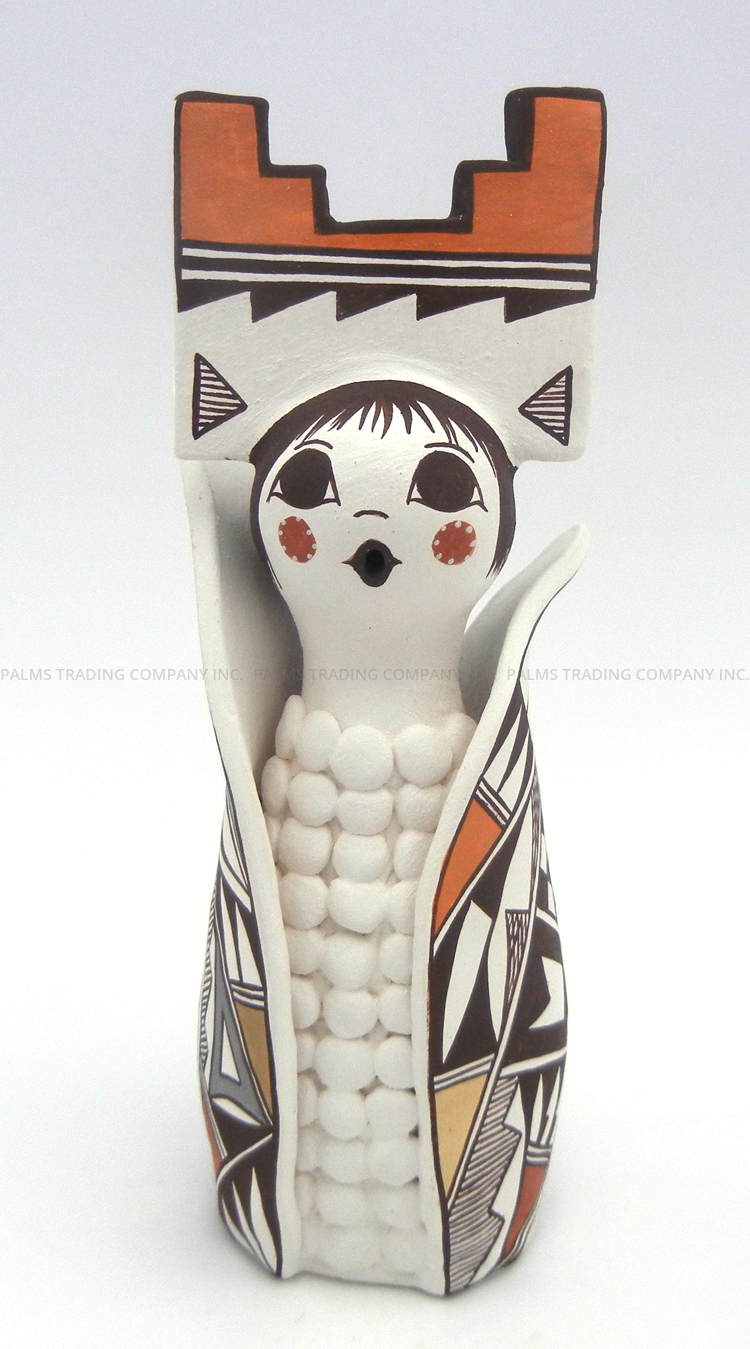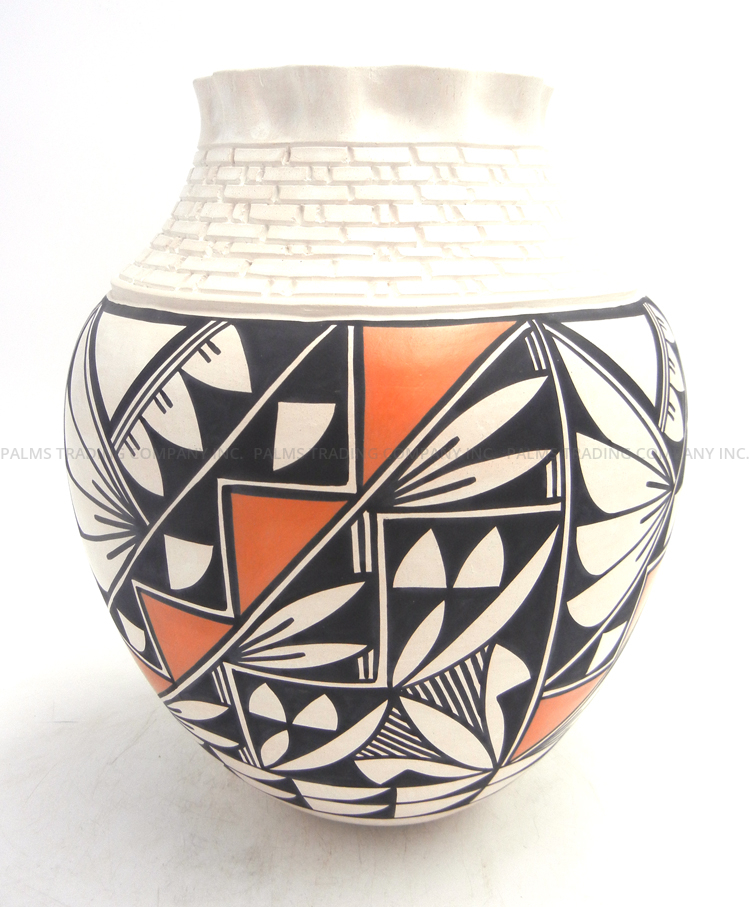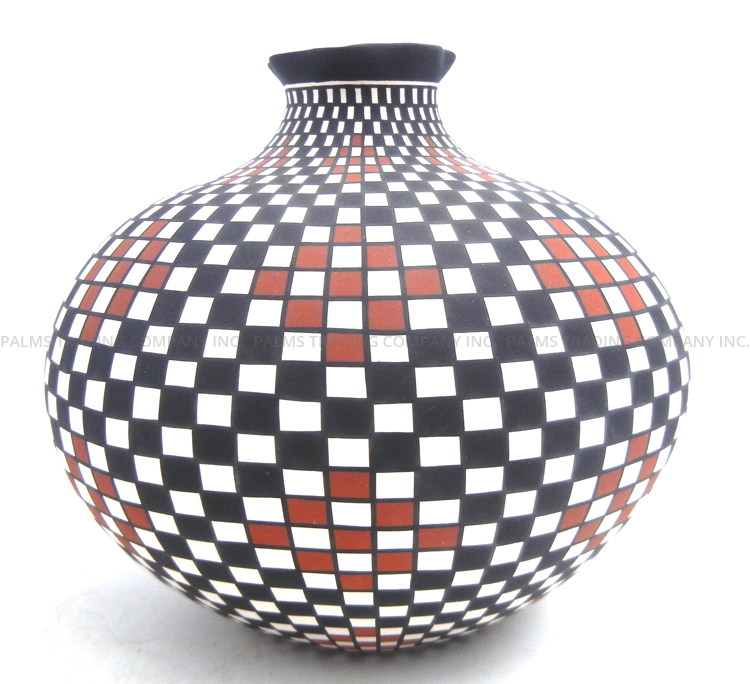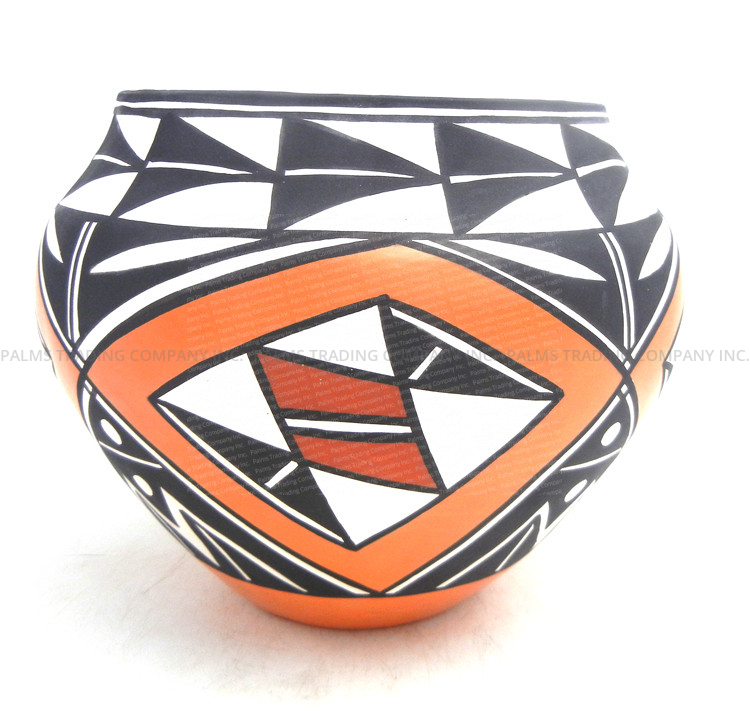Related Products
Acoma Pueblo, also known as “Sky City,” is built on top of a near 400-foot mesa approximately 72 miles west of Albuquerque, New Mexico.
The Acoma Pueblo has remained inhabited since 1150 A.D., with its people continuing to practice the pottery-making traditions of their ancestors.
Acoma Pueblo pottery holds profound significance for the Acoma people, serving as a tangible link to their cultural heritage. This ancient art form is a testament to their artistic prowess and a repository of cultural knowledge and symbolism passed down through generations.
It embodies the enduring connection between the Acoma people and their ancestral lands, reflecting their identity and preserving the essence of their culture.
Palms Trading Company
Browse our collection of Acoma Pueblo pottery
Contact Palms Trading Company today at (800) 748-1656
Characteristic Color and Design of Acoma Pueblo Pottery
Contemporary Acoma Pueblo pottery serves as a vision of the past, as artisans create their pieces using their ancestor’s techniques.
Pottery is hand-coiled using locally sourced and purified clay. Artisans use paints made from natural minerals and vegetal materials to create their mesmerizing designs. Much like their ancestors, these pieces are then fired once using extremely high temperatures.
Whether it’s called a pot, jar, or bowl, the Acoma Pueblo pottery style is dominated by the olla-shaped vessel with a narrow base that gradually widens. The broadest section of the vessel is just before the taper towards the mouth begins.
Unpainted Acoma Pueblo pottery is characteristically a light cream, almost white color. Some vessels are left unpainted, and the austerity of the pottery’s natural color is breathtaking.
Most Acoma Pueblo pottery is painted, typically using red and orange (terra cotta) outlined in black.
Acoma artists are known for their use of intricate designs. Fine lines, symbolizing falling rain, are painted closely together. Line direction varies to create larger geometric patterns.
Another design common to Acoma Pueblo pottery is the parrot. Introduced by the Spanish, the parrot is highly regarded by the Acoma people. According to legend, the parrot led a group of Acoma women to a clean, cool watering hole.
These pieces represent time-honored traditions and the expertise of Acoma potters, making the pottery highly prized by art enthusiasts and collectors worldwide.
Other Distinguishing Features of Acoma Pottery
Acoma pottery typically features exceptionally thin walls, which require great skill to create. This characteristic sets it apart from other pottery styles and is made possible by the use of the clay found in the hills surrounding the Acoma Pueblo.
Acoma Pueblo pottery is designed to be fine and perfectly symmetrical. When an artist masters this craft, the piece of Acoma Pueblo pottery “rings” when lightly tapped.
Another distinct feature of many Acoma pots is their fluted or scalloped rims, imparting a unique and artistic dimension to these vessels. Acoma Pueblo pottery, with its rich history, intricate designs, and cultural significance, stands as a testament to the enduring beauty of Indigenous artistry, capturing the essence of time and tradition in every exquisitely crafted piece.
Renowned Acoma Pueblo Pottery Artists
Charmae Natseway is known for her contemporary Native American Indian pottery. Largely neglecting traditional ollas, Natseway creates flasks and non-traditional cylindrical pieces.
Paula Estevan‘s work is “classic” Acoma Pueblo pottery. Estevan favors repeating geometric designs, often monochromatic, which have a dizzying effect on the eye. The precision of her lines is astounding.
Add Acoma Pueblo Pottery to Your Collection
Palms Trading Company buys Native American Indian pottery directly from the artists, so we guarantee each Acoma Pueblo pottery piece is authentic.
Our online selection is only a small sample of what Palms Trading Company carries in-store. If you would like to see more Acoma Pueblo pottery, please contact us to use our personal shopper service.
Contact Palms Trading Company today
for authentic Native American Art
Please call us at





